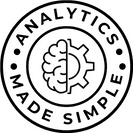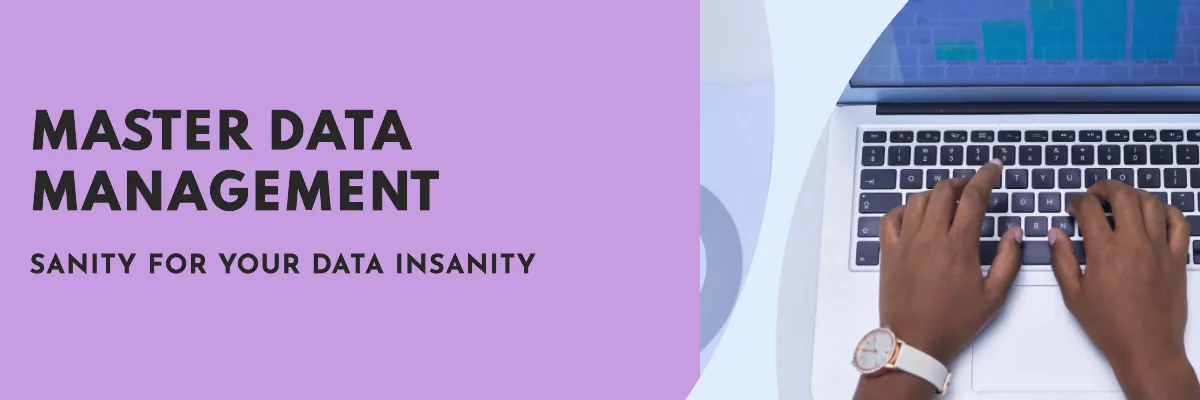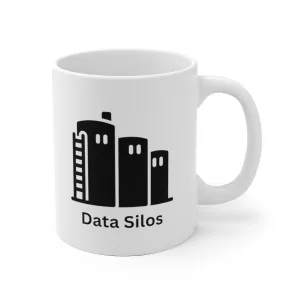In the data-driven business world of today, having accurate and consistent information on critical entities like customers, products, suppliers, etc. is more important than ever. However, with data inundating organizations from an explosion of sources and applications, achieving a “single source of truth” remains a huge pain point. This is where master data management (MDM) comes in – as a strategic solution to maximize the value of data assets.
This comprehensive guide will provide a deep dive into what MDM is, why it matters, best practices for implementation, and how to ensure long-term success.
Table of Contents
What is Master Data Management and Why Does it Matter?
Let’s start with the basics – what exactly is master data? Simply put, master data refers to the core business entities that are essential for operations and analytics. This includes critical domains like:
- Customer (buyer, contact etc.)
- Product (item, SKU, service etc.)
- Supplier and partner
- Account (profit center, cost center etc.)
- Location (site, region, country)
- Asset (equipment, facilities etc.)
- Material (raw material, packaging etc.)
The master data provides the unified authoritative source from where key business processes and systems draw their critical information. It focuses on defining the core business entities versus transactional data that just captures business events.
Why is Master Data Important?
With master data, organizations can build the foundation for a single source of truth across the enterprise. This results in tremendous benefits:
- Trusted metrics and reporting: With unified master data, all KPIs and reports have a consistent data set without version errors. No more reconciling disconnects across systems!
- Improved operational efficiency: Master data ensures various business processes work off the same customer, product, and supplier data. This eliminates redundant tasks and accelerates processes.
- Enhanced analytics and insights: With accurate master data, analytics becomes way more powerful in offering meaningful business intelligence not skewed by dirty data.
- Superior customer experience: A single view of the customer helps enable personalized, consistent interactions across all channels.
- Increased agility and innovation: Master data simplifies integrations across business applications. This provides an agile foundation for innovation.
- Compliance and auditability: Accurate master data improves compliance with regulations and makes audits easier with reliable data trails.
When weighing these substantial benefits, it becomes apparent why enterprises consider MDM a strategic priority for driving digital transformation. It provides the core data backbone for building agile, data-driven organizations.
The Role of MDM in Data Quality
In a world where decisions are only as good as the data behind them, MDM serves as the guardian of data quality. It ensures that the information driving your critical business processes is not just accurate but stays that way. It’s the quality control that prevents your data from turning into a discordant mess.
Demystifying MDM Architecture Concepts
Now that the benefits are clear, how can organizations architect and implement an MDM approach? The key components of a typical MDM architecture include:
- Master data hub: This acts as the central repository where master data from various source systems across the organization is consolidated and unified. It provides golden records by aggregating data from various sources.
- Data integration layer: ETL and data mapping tools integrate master data from source systems like ERP, CRM, SCM, etc. into the central master data hub. This could include batch or real-time integration.
- Master data management application: An MDM system provides the core capabilities for master data governance, workflow, hierarchy management, data quality, matching & consolidation, stewardship, and enrichment. Leading MDM software products can handle a range of master data domains in a single platform.
- Master data access services: These services and APIs enable downstream IT systems to access authoritative master data easily for operational and analytical use cases.
- Data consumers: The various business processes, analytics systems, and customer-facing apps that leverage the authoritative master data from the MDM hub.
Architectures in Master Data Management
There are different architectures in master data management, and each has its own benefits and drawbacks. Here are some of the most common architectures:
- Registry Style: In this architecture, the master data is stored in a central registry, and the applications access the data from the registry. This architecture is useful when there are multiple applications that need to access the same master data.
- Consolidation Style: In this architecture, the master data is consolidated into a single database, and the applications access the data from the database. This architecture is useful when there are multiple sources of master data that need to be consolidated.
- Coexistence Style: In this architecture, the master data is stored in multiple databases, and the applications access the data from the databases. This architecture is useful when there are multiple sources of master data that cannot be consolidated.
- Centralized Style: In this architecture, the master data is stored in a central database, and the applications access the data from the database. This architecture is useful when there is a single source of master data.
Choosing the Right Architecture
Choosing the right architecture for your master data management system depends on your business situation when it comes to data management. There are a few different implementation styles to choose from, with the main differences being whether you control your data from a central hub or synchronize the hub with your existing data sources.
Maintaining a single version of the truth across your organization is a high priority for most organizations alongside meeting compliance and regulatory obligations. Focus is placed on improving data quality and processes, establishing guidelines for data governance, and ensuring data can be easily managed and accessed across the business.
Choosing the Right MDM Solution
When evaluating options for an MDM system, organizations should consider key criteria:
- Domain coverage: Shortlist solutions that can handle customer, product, and other master data domains you need. Avoid niche applications with limited entity coverage.
- Architecture style: Understand capabilities for hub, registry, and hybrid models to select the right architectural fit.
- Built-in data quality: Choose a platform with robust capabilities for data validation, matching, and survivorship built-in to handle dirty master data.
- Deployment flexibility: Seek a vendor-agnostic solution with on-premise, cloud, and hybrid deployment options for scalability.
- Total cost of ownership: Consider both licensing and implementation costs for a clear picture of TCO.
- Vendor lock-in: Prioritize portable solutions based on open standards to avoid proprietary lock-in.
- Data security: Mandate capabilities for master data security, access control, encryption etc. especially for cloud options.
Beyond software, MDM success requires a holistic approach spanning people, processes, and technology. Let’s look at some leading practices.
Master Data Governance Best Practices
The right MDM software is just one piece of the puzzle. Effective master data governance is critical for sustaining accuracy and trust long term. Some leading governance models include:
- Centralized: A dedicated MDM team owns and handles all processes end-to-end.
- Domain-centric: Domain experts across units govern specific master data domains.
- Hybrid: Combines centralized and distributed teams for holistic governance across domains.
Along with the operating model, disciplined MDM processes are a must. Key governance processes include:
- Master data stewardship: Assign data stewards to take ownership of master data quality for their domains.
- Metadata management: Maintain data dictionaries, standards, taxonomies, and policies for master data.
- Hierarchy management: Build out and maintain reporting, product category, location, and other hierarchies.
- Change control: Use rigorous change management for master data with automated workflows.
- Data validation: Define business rules, metrics monitoring, and issue escalation to maintain integrity.
- Master data security: Establish access controls and enforce security policies for master data.
Navigating MDM Challenges and Solutions
Challenges on the MDM Horizon
Even superheroes face challenges, and MDM is no exception. One of the hurdles is integrating MDM into existing systems. Think of it like trying to fit a new puzzle piece into an already completed puzzle. It requires finesse and a strategic approach to ensure that the integration doesn’t disrupt your business processes.
Integration Hurdles and Interoperability
Integration can be tricky, especially in a world where businesses rely on a patchwork of systems. MDM navigates these challenges by offering strategies for seamless interoperability. It’s the mediator between different systems, ensuring they speak the same language and share data effortlessly.
Data Governance and Security Concerns
As data becomes the lifeblood of organizations, ensuring its security is paramount. MDM tackles this concern head-on by implementing robust data governance strategies. It’s the digital guardian that protects sensitive information, ensuring that only authorized personnel have access and that data is handled with the utmost care.
Keys to a Successful MDM Implementation
Beyond the fundamentals, here are some proven tactics for MDM success:
- Incremental adoption: Start with 1-2 critical domains, prove value, and then expand MDM systematically.
- Executive sponsorship: Secure senior leadership support to get funding and cross-functional buy-in.
- Collaborative culture: Foster a cooperative culture across IT, and business teams for effective governance.
- Data literacy focus: Invest in data skills training and literacy programs to uplift competencies.
- Continuous improvement: Set up feedback loops, audits, and metrics monitoring for ongoing MDM enhancement.
With a well-architected MDM solution, robust governance, and the right adoption tactics – organizations can maximize their return on data assets.
Sources to check out
- Essential Elements of a Master Data Management Architecture
- 5 Advantages of a Master Data Management System
- Key Issues in Master Data Management
Summary
Look, I get it – data is complex. It’s coming at you from a million different sources and applications. Customer info here, product stats there, financial data everywhere! It’s out of control.
But here’s the good news – you can get a handle on it with Master Data Management. MDM gives you that single “source of truth” on your core data – your master data – so everything in your business is working off the same accurate info.
With MDM, you can go from chaotic disjointed data to trusted data that gives you superpowers. Your teams will be freed from tedious manual work. Your analytics will reveal kick-ass insights. And you can deliver phenomenal customer experiences.
So don’t despair – MDM to the rescue! It’s your data’s passport from pandemonium to precision. With the right people, processes, and technology, you can become a data master once and for all. Then sit back and watch your company thrive with data that’s flowing freely and under control.
Cheers!
-J
Remember to check out my Swag Store for cool Analytics Inspired Merch!

-
 Data Silos Mouse Pad$18.00
Data Silos Mouse Pad$18.00 -
 Data Cleansing Coffee Mug$25.00
Data Cleansing Coffee Mug$25.00 -
 Data Unicorn White Ceramic Coffee Mug$22.00 – $25.00
Data Unicorn White Ceramic Coffee Mug$22.00 – $25.00 -
 Data Silos Coffee Mug$22.00 – $25.00
Data Silos Coffee Mug$22.00 – $25.00 -
 Data Unicorn Shirt$25.00 – $28.00
Data Unicorn Shirt$25.00 – $28.00 -
 Data Cleansing Shirt$25.00 – $28.00
Data Cleansing Shirt$25.00 – $28.00 -
 Data Silos Shirt$25.00 – $28.00
Data Silos Shirt$25.00 – $28.00















